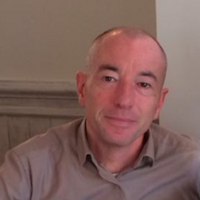Modeling Predicts Effective Approach to HIV Drug Resistance
Modeling predicts cost-effective approach to HIV drug resistance in low-resource, highly afflicted sub-Saharan Africa.
Andrew Phillips, PhD, Institute for Global Health, University College London

Andrew Phillips, PhD
A simulation model of the transmission and treatment response of HIV in sub-Saharan Africa predicts a cost-effective approach for treating the approximate 10% of HIV-infected patients who are resistant to the standard World Health Organization (WHO)-recommended first-line regimen.
Andrew Phillips, PhD, Institute for Global Health, University College London, London, UK, and colleagues indicate that this region of limited resources and more than 18 million people now on antiretroviral therapy (ART) confront an increasing prevalence of pretreatment resistance to the non-nucleoside reverse transcriptase inhibitor (NNRTI) component of first-line treatment regimens.
"Responses need to be guided not only by what is predicted to be the most effective option for averting DALYs (disability-adjusted life-years) in the population but also by cost-effectiveness," Phillips and colleagues indicated.
The options built into the HIV Synthesis Model to confront the resistance to NNRTIs, evidenced particularly with first-line efavirenz (Sustiva, Bristol-Myers Squibb), were based on using dolutegravir (Tivicay, ViiV Healthcare), which is the WHO-recommended alternative to efavirenz-centered regimens. The investigators analyzed outcomes from either testing for NNRTI resistance at treatment initiation and providing dolutegravir-based regimen if resistance is detected, or transitioning the recommended first-line ART to dolutegravir-based regimens, obviating need for testing NNRTI susceptibility.
The investigators describe the individual-based simulation model, developed to facilitate analysis of HIV and ART population-based issues, as incorporating extensive data from published sources to account for demographics and behaviors, as well as specific drug effects and resistance mutations. The model generates populations of adults with quarterly interval status throughout a lifespan for a range of factors including HIV testing, condomless sex and risk of HIV acquisition.
Parameters tracked in the individuals modeled for acquiring HIV include viral load, CD4 cell count, occurrence of WHO stage 3 and 4 HIV disease condition, clinic attendance and drop-out, use of specific antiretroviral drugs, presence of specific resistance mutations, adherence to ART and toxic effects of particular regimens of ART.
Among the assumptions incorporated into the model for this application were that dolutegravir would exhibit a similar rate of resistance to that of the protease inhibitor, atazanavir (Reyataz, Bristol-Myers Squibb) boosted with ritonavir (Norvir, Abbvie). The investigators inferred this would be approximately 27 times lower than the resistance rate for efavirenez.
Phillips and colleagues report that the modeling predicted a transition to a dolutegravir based first-line regimen in regions with more than 10% NNRTI drug resistance would produce the most cost-effective approach and achieve the most health benefits, with a reduction of about 1 death per year per 100 people on ART throughout the next 20 years.
"The urgency of the transition will depend largely on the country-specific prevalence of NNRTI resistance," Phillips and colleagues noted.
In an accompanying commentary, Richard Kaplan, MD, and Robin Wood, MMed, DSc(Med), Desmond Tutu HIV Centre, University of Cape Town, Cape Town, South Africa, cautioned that there are challenges to considering dolutegravir as a first-line regimen, "The authors do comment on some of these, namely that not enough evidence exists to guide dolutegravir use in pregnancy and tuberculosis and the possibility of increased risk of immune response inflammatory syndrome (IRIS), particularly in individuals with low CD4 cell counts, but they do not seem to consider these factors as caveats for use in first-line therapy."
The modeling study was funded by the Bill & Melinda Gates Foundation and the World Health Organization. Results of the study were incorporated into the WHO Guidelines Development Group process, which subsequently issued a consensus statement recommending regions in which rates of resistance to NNRTIs is 10% or more "urgently consider" an alternative first-time ART regimen that does not contain an NNRTI.
The modeling study of treatment options for NNRTI drug resistance in sub-Saharan Africa was published in the March The Lancet HIV.